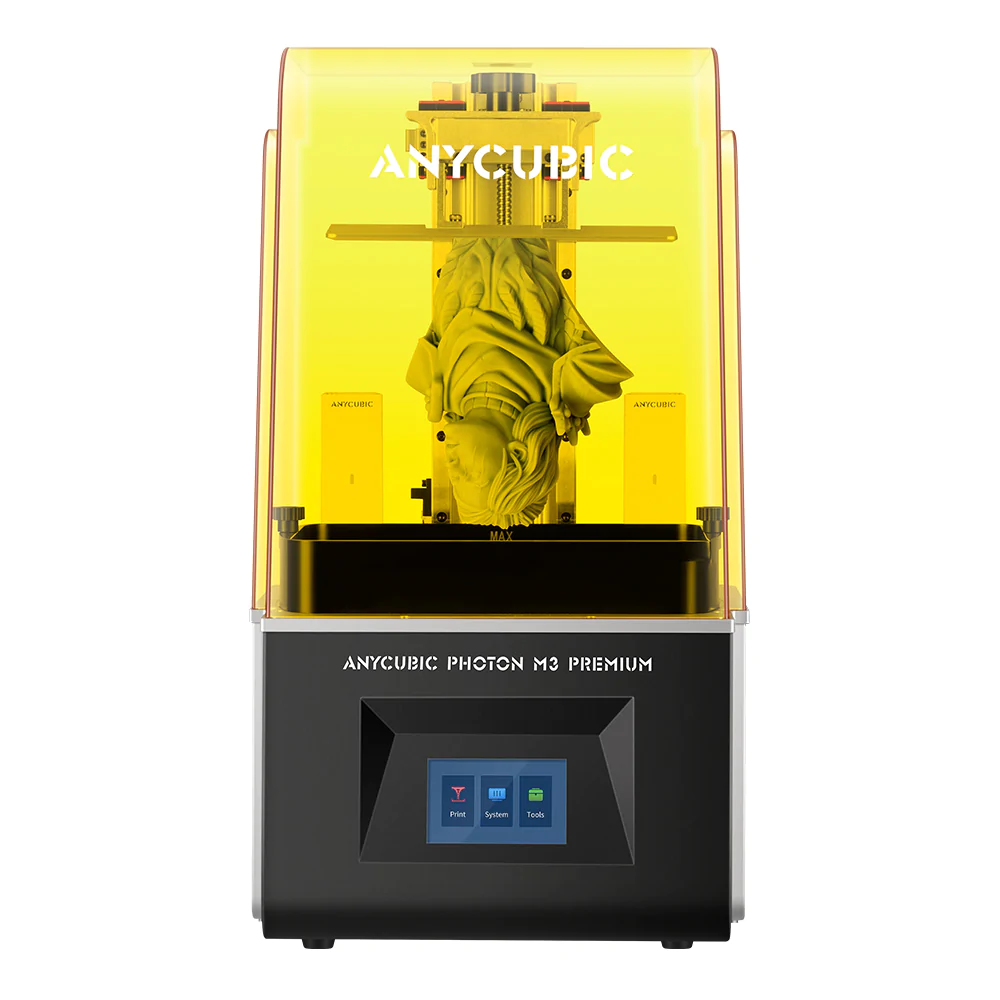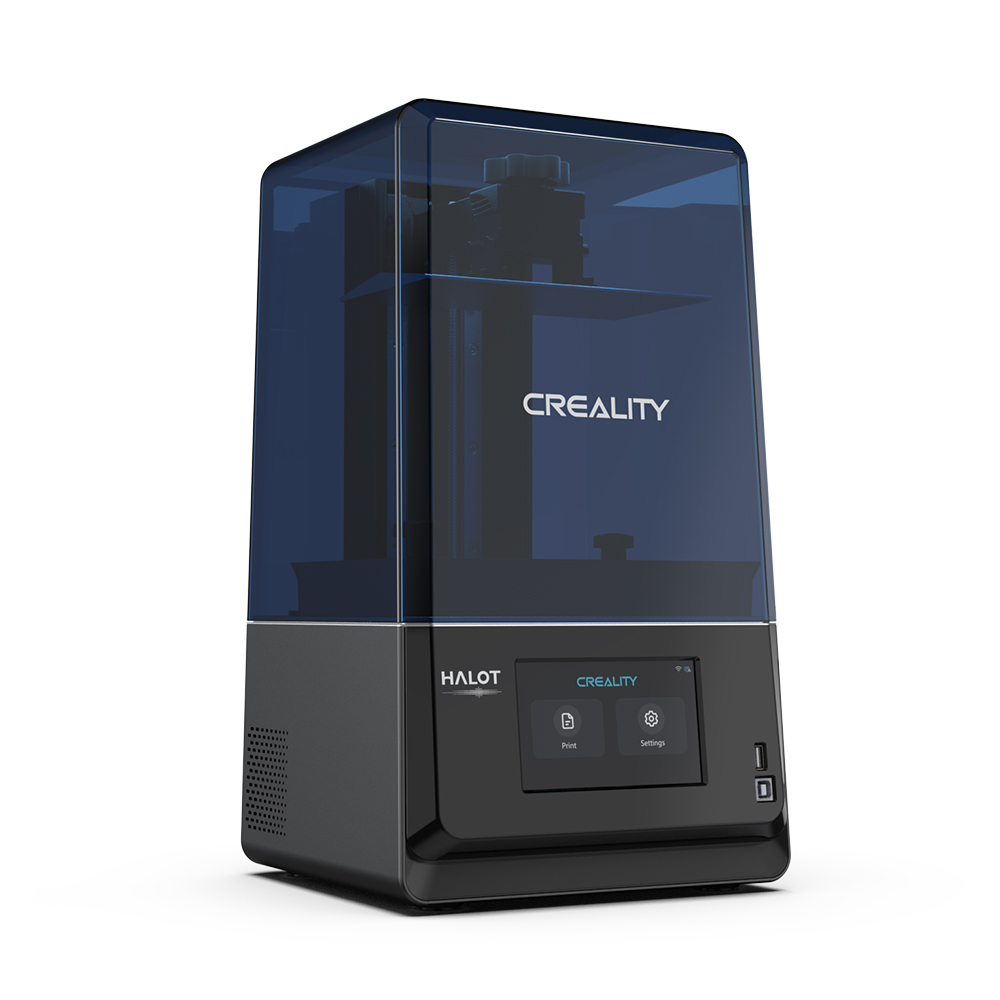Compare Photon M3 Premium vs Halot One Plus
Comparison between the best 3D printers
Choose the best 3D printer at the best price. The cheapest 3D printers are here.
Buy a 3D printer here with 3D Fila.
 |
 |
|
| Model | Photon M3 Premium[BUY Photon M3 Premium] |
Halot One Plus[BUY Halot One Plus] |
| Printing Material | Resin | Resin |
| Buy Resin for Anycubic Photon M3 Premium | Buy Resin forCreality 3D Halot One Plus | |
| Estimated price | $600,00 | $399,00 |
| Manufacturer | Anycubic | Creality 3D |
| Release Year | 2022 | 2022 |
| Print Volume [mm] | 123x219x250 | 102x172x160 |
| Printer Size [mm] | 330x350x630 | 236x245x416 |
| Weight [kg] | 19 | 6,8 |
| Power Loss Recovery | NO | NO |
| Technology | LCD | LCD |
| Screen Resolution | 8k | |
| Max Print Speed [s/layer] | 1 | 1 |
| Maximum Resolution [mm] | 0,01 | |
| Processor | ||
| Display | Display touchscreen 4,3'' | |
| Power Supply | 150 W | |
| Connectivity | USB / Wi-Fi | USB / Wi-Fi |
| Operating systems | ||
| Date of registration in the system | 2023-01-19 | 2022-10-11 |
| Release date | 2022 | 2022 |
| Extra features | The Anycubic Photon M3 Premium Printer features MSLA technology with a 10-inch monochrome LCD screen and 8K resolution, ensuring prints with fine details thanks to the 28.5 micron resolution. It has a generous build volume (219 x 123 x 250 mm), an intelligent cooling system for greater durability, and a laser-etched build plate for better adhesion. It offers dual air filters, reducing odors, and the promise of compatibility with the Anycubic Cloud app. Its design includes an Art Deco-style UV curved glass and an efficient leveling system for the build platform. | Crealitys Halot-One Plus printer stands out for its 4K+ resolution that delivers sharp details and consistent surfaces. It features a fast and responsive 5-inch LCD interface, as well as easy-to-use Halot Box software. It offers Wi-Fi connectivity and remote print monitoring, as well as an integrated air filtration unit, a rare feature in this price range. The Halot-One Plus is designed for the prosumer market, combining high quality with advanced features such as Wi-Fi and air filtration. During testing, it stood out for implementing these features at an affordable cost, while maintaining functionality. It features an attractive design with a UV-resistant blue cover and a robust dual rail system for the Z-axis, ensuring smooth and consistent movements. The large LCD and high resolution of the LCD mask (4320 x 2560) are other strong points, allowing for fine details and textures in prints. |
| Support for multiple colors and materials (AMS and CFS) | NO | NO |
Notes * |
||
| Cost-benefit | 7 / 10 | 8 / 10 |
| Hardware | 3.5 / 10 | 1.4 / 10 |
| Tela | . | . |
| Print volume | 3 / 10 | 3 / 10 |
| Performance | 9 / 10 | 9 / 10 |
| [BUY Photon M3 Premium] | [BUY Halot One Plus] |
Conclusion |
| In comparing the Photon M3 Premium and the Halot One Plus, both 3D printers have notable strengths and features suited to different user needs. The Photon M3 Premium emerges as a high-performance option, boasting exceptional print quality with its 8K resolution, a larger print volume, and a thoughtful design that enhances print accuracy and adhesion. This printer is ideal for users seeking detailed and larger prints and is equipped with advanced features like dual air filters and an intelligent cooling system, making it a premium choice for serious hobbyists and professionals. On the other hand, the Halot One Plus offers an excellent balance between quality and affordability. With its 4K+ resolution, it still delivers sharp details while offering features like Wi-Fi connectivity and an integrated air filtration system, which are impressive for its price range. This model is particularly appealing for those who are looking for a cost-effective solution without compromising on essential functionalities, making it a strong contender in the prosumer market. In terms of cost-benefit, the Halot One Plus scores higher, making it an attractive choice for budget-conscious users who want quality prints without overspending. Meanwhile, the Photon M3 Premium, despite a higher cost, is better suited for users who prioritize top-tier performance and greater print volume. Ultimately, the choice between the two hinges on your specific needs—whether you prioritize higher print detail and volume, or a more budget-friendly yet capable printer with essential features. Each model offers a compelling value proposition, and your decision should reflect your individual printing requirements and financial considerations. |

